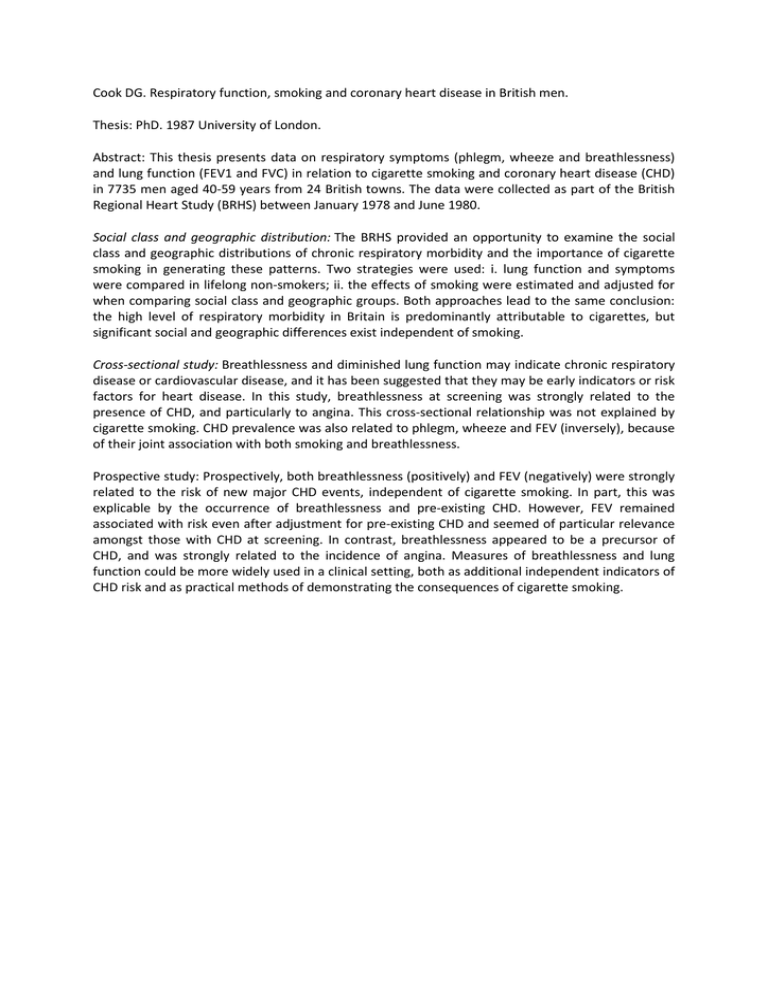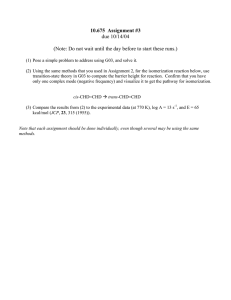Cook DG. Respiratory function, smoking and coronary heart disease in... Thesis: PhD. 1987 University of London.
advertisement

Cook DG. Respiratory function, smoking and coronary heart disease in British men. Thesis: PhD. 1987 University of London. Abstract: This thesis presents data on respiratory symptoms (phlegm, wheeze and breathlessness) and lung function (FEV1 and FVC) in relation to cigarette smoking and coronary heart disease (CHD) in 7735 men aged 40-59 years from 24 British towns. The data were collected as part of the British Regional Heart Study (BRHS) between January 1978 and June 1980. Social class and geographic distribution: The BRHS provided an opportunity to examine the social class and geographic distributions of chronic respiratory morbidity and the importance of cigarette smoking in generating these patterns. Two strategies were used: i. lung function and symptoms were compared in lifelong non-smokers; ii. the effects of smoking were estimated and adjusted for when comparing social class and geographic groups. Both approaches lead to the same conclusion: the high level of respiratory morbidity in Britain is predominantly attributable to cigarettes, but significant social and geographic differences exist independent of smoking. Cross-sectional study: Breathlessness and diminished lung function may indicate chronic respiratory disease or cardiovascular disease, and it has been suggested that they may be early indicators or risk factors for heart disease. In this study, breathlessness at screening was strongly related to the presence of CHD, and particularly to angina. This cross-sectional relationship was not explained by cigarette smoking. CHD prevalence was also related to phlegm, wheeze and FEV (inversely), because of their joint association with both smoking and breathlessness. Prospective study: Prospectively, both breathlessness (positively) and FEV (negatively) were strongly related to the risk of new major CHD events, independent of cigarette smoking. In part, this was explicable by the occurrence of breathlessness and pre-existing CHD. However, FEV remained associated with risk even after adjustment for pre-existing CHD and seemed of particular relevance amongst those with CHD at screening. In contrast, breathlessness appeared to be a precursor of CHD, and was strongly related to the incidence of angina. Measures of breathlessness and lung function could be more widely used in a clinical setting, both as additional independent indicators of CHD risk and as practical methods of demonstrating the consequences of cigarette smoking.





